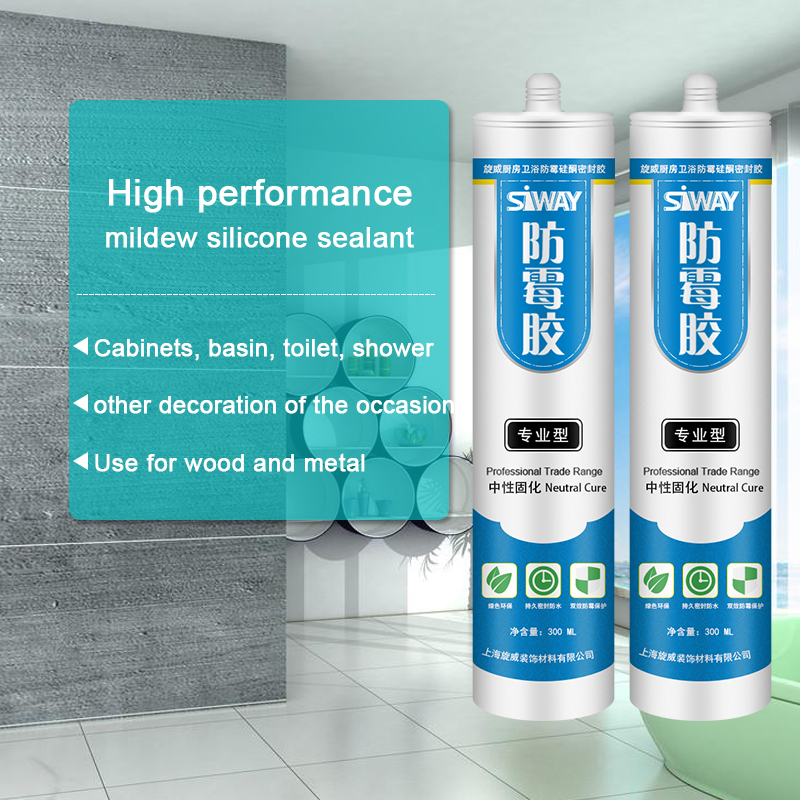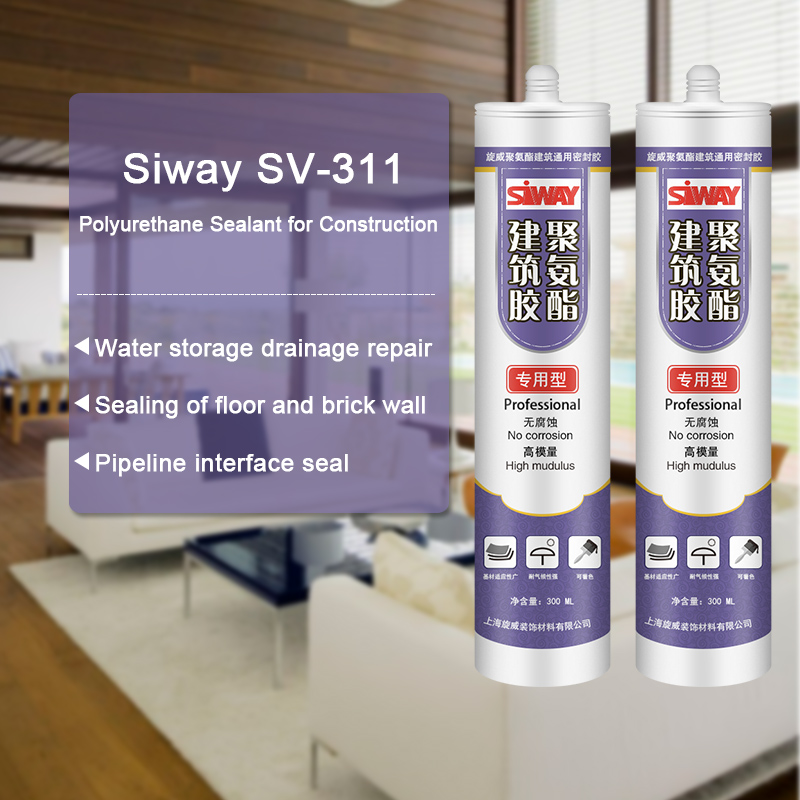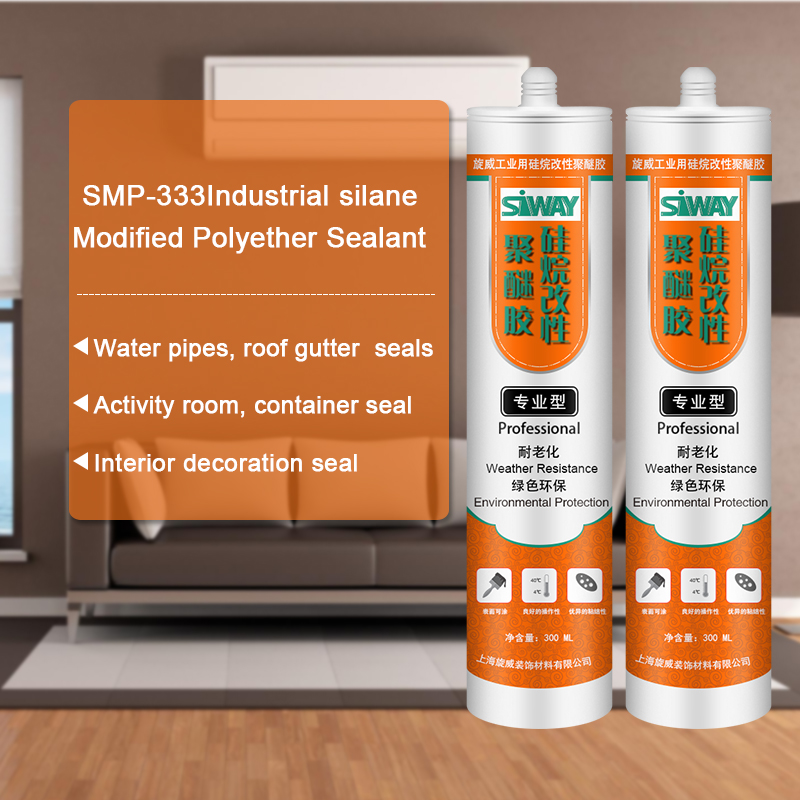14 Years manufacturer SV-999 Structural Glazing Silicone Sealant for UAE Factories
Short Description:
Description SV – 999 silicone structural sealant is a one-component, neutral curing, designed for glass curtain wall, aluminum curtain wall, glass daylighting roof and metal structural engineering structural assembly silicone sealant. Show the effective physical properties and bonding performance Key Features 1. 100% silicone 2. No sag 3. Strong bonding strength 4. Water & weatherproof 5. Primerless adhesion to most building materials 6. 25% movement capability Basic Application...
owing to good service, a variety of high quality products, competitive prices and efficient delivery, we enjoy a good reputation among our customers. We are an energetic company with wide market for 14 Years manufacturer SV-999 Structural Glazing Silicone Sealant for UAE Factories, Our tenet is 'Reasonable prices, efficient production time and best service .' We hope to cooperate with more customers for mutual development and benefits.
Description
SV – 999 silicone structural sealant is a one-component, neutral curing, designed for glass curtain wall, aluminum curtain wall, glass daylighting roof and metal structural engineering structural assembly silicone sealant. Show the effective physical properties and bonding performance
Key Features
1. 100% silicone
2. No sag
3. Strong bonding strength
4. Water & weatherproof
5. Primerless adhesion to most building materials
6. 25% movement capability
Basic Application
1.Glass curtain wall, aluminum curtain wall structure adhesive seal
2.Glass daylighting roof, metal structure engineering
3.Insulating glass bonding
Technical data sheet
| Test standard | Test project | Unit | value |
| Before curing——25℃,50%R.H. | |||
| specific gravity | g/ml | 1.40 | |
| GB13477 | Flow, sagging or vertical flow | mm | 0 |
| GB13477 | Operating time | min | 15 |
| GB13477 | surface drying time(25℃,50%R.H.) | min | 40-60 |
| Sealant curing speed and operating time will have different with different temperatures and temperature, high temperature and high humidity can make sealant curing speed faster, rather low temperature and low humidity are slower.21 days after curing——25℃,50%R.H. | |||
| GB13477 | Durometer Hardness | Shore A | 40 |
| The ultimate tensile strength | Mpa | 1.3 | |
| GB13477 | Tensile strength(23℃) | Mpa | 0.8 |
| GB13477 | Tensile strength(90℃) | Mpa | 0.5 |
| GB13477 | Tensile strength(-30℃) | Mpa | 0.9 |
| GB13477 | Tensile strength(flooding) | Mpa | 0.6 |
| GB13477 | Tensile strength(flooding – ultraviolet) | Mpa | 0.6 |
Certification
GB 16776;ASTM C1184
Color
Black
Package
300ml in cartridge * 24 per box, 500ml in sausage *20 per box
Shelf life
12 months
Note
If you want the TDS or MSDS or other details, please contact with our sales person.
Buy Cook’s Science today: https://amzn.to/212U0nC
The Science of Good Cooking: https://amzn.to/1O8oGw7
Conventional wisdom holds that frozen steaks should be thawed before cooking, but we wondered if you can cook frozen meat straight from the freezer. Cook’s Illustrated Senior Editor Dan Souza explains our cooking experiments.
WATCH: How to Make the Most Perfect Bacon Ever https://www.youtube.com/watch?v=2guC4Badq2s
WATCH: How to Quickly Defrost Meat
Recipe for Ultimate Charcoal-Grilled Steaks: https://cooks.io/2lsTUYe
Recipe for Grilled Frozen Steaks: https://cooks.io/2lsXUYu
Recipe for Pan-Seared Thick-Cut Strip Steaks: https://bit.ly/ULQJwD
EXPERIMENT
We cut a strip loin into eight steaks, cut each steak in half crosswise, put the pieces in vacuum-sealed bags, and froze them. We then thawed half of each steak in the refrigerator overnight and kept the other half frozen. Using our preferred method, we seared both sets of steaks in a hot skillet for 90 seconds per side and then transferred them to a 275-degree oven until they reached 125 degrees, or medium-rare. To track moisture loss, we weighed each steak before and after cooking.
RESULTS
Not surprisingly, the frozen steaks took longer to finish cooking through in the oven (18 to 22 minutes versus 10 to 15 minutes for the thawed steaks). What was surprising was that the frozen steaks actually browned in the skillet just as well as, and in the same amount of time as, the thawed steaks. Furthermore, they had thinner bands of gray, overcooked meat directly under the crust than the thawed steaks had. We also found that these steaks lost on average 9 percent less moisture during cooking than the thawed steaks did. Sampling the steaks side by side, tasters unanimously preferred the cooked-from-frozen steaks to their thawed counterparts.
EXPLANATION
A fully frozen steak is extremely cold, which prevents overcooking while the surface reaches the very high temperatures necessary for browning reactions. As for the difference in moisture loss, we know that when meat is cooked to temperatures higher than 140 degrees, its muscle fibers begin to squeeze out a significant amount of moisture. As its slightly thicker gray band indicated, the steak that had been thawed had more overcooking around the edge, so it made sense that it also had greater moisture loss.
THE TAKEAWAY
While we prefer to start with steak that’s never been frozen for the best texture, if we do have frozen steaks on hand, from now on we’ll cook them straight from the freezer. (But if you can choose between frozen vs. fresh, definitely go for fresh.)
Here’s what to do for the best frozen steaks: Freeze steaks, uncovered, overnight on a baking sheet (this dries them out to prevent excess splattering during cooking), then wrap them tightly in plastic wrap, place in a zipper-lock bag, and return to freezer. To ensure that the steaks brown evenly, add oil to the skillet until it measures 1/8 inch deep. And because frozen steaks will splatter more during searing, use a large skillet.
See this tip on Cook’s Illustrated: https://cooks.io/2lt45vQ
America’s Test Kitchen is a real 2,500 square foot test kitchen located just outside of Boston that is home to more than three dozen full-time cooks and product testers. Our mission is simple: to develop the absolute best recipes for all of your favorite foods. To do this, we test each recipe 30, 40, sometimes as many as 70 times, until we arrive at the combination of ingredients, technique, temperature, cooking time, and equipment that yields the best, most-foolproof recipe.
Each week, the cast of America’s Test Kitchen brings the recipes, testings, and tastings from Cook’s Illustrated magazine to life on our public television series. With more than 2 million viewers per episode, we are the most-watched cooking show on public television.
https://www.americastestkitchen.com
More than 1.3 million home cooks rely on Cook’s Illustrated and Cook’s Country magazines to provide trusted recipes that work, honest ratings of equipment and supermarket ingredients, and kitchen tips.
https://www.cooksillustrated.com
https://www.cookscountry.com
https://www.briskheat.com/p-355-sr-sil…
SR Silicone Rubber Composite Curing Heating Blankets
Specifications
Highly flexible: 1/4″ (6mm) bend radius
Multi-stranded heating element is uniformily placed to maximize heat distribution
Power density: 5 watts / in2 (0.008 watts / mm2)
Maximum exposure temperature: 450°F (232°C)
Heating element is laminated between two layers of 66 mil thick non-reinforced silicone rubber
Moisture, chemical, and radiation resistant
Strain relief built through entire edge of blanket for increased durability
Dielectric strength: Over 2000 volts
Choice of voltage: 120VAC or 240VAC
Power cord is 6 feet (1.8m) long with a standard ACR 3 Hot Bonder compatible plug (NEMA L14-30)*
Temperature controller required
BriskHeat SR Silicone Rubber Composite Curing Heating Blankets:
Ideal for composite repair and fabrication. Can be used on horizontal surfaces, vertical surfaces, and on complex contoured surfaces without removing the damaged section. Highly flexible: Good for leading and trailing edges. Exceptional durability. Excellent heat uniformity. Compatible with your ACR 3 Hot Bonder or current equipment. CE 73/23/EEC. Highly flexible: 1/4 inch (6mm) bend radius. Multi-stranded heating element is uniformily placed to maximize heat distribution. Power density: 5 watts / inch squared (0.008 watts / mm squared). Maximum exposure temperature: 450 degrees F (232 degrees C). Heating element is laminated between two layers of 66 mil thick non-reinforced silicone rubber. Moisture, chemical, and radiation resistant. Strain relief built through entire edge of blanket for increased durability. Dielectric strength: Over 2000 volts. Choice of voltage: 120VAC or 240VAC. Power cord is 6 feet (1.8m) long with a standard ACR 3 Hot Bonder compatible plug (NEMA L14-30). Other plug choices are available. Temperature controller required.




